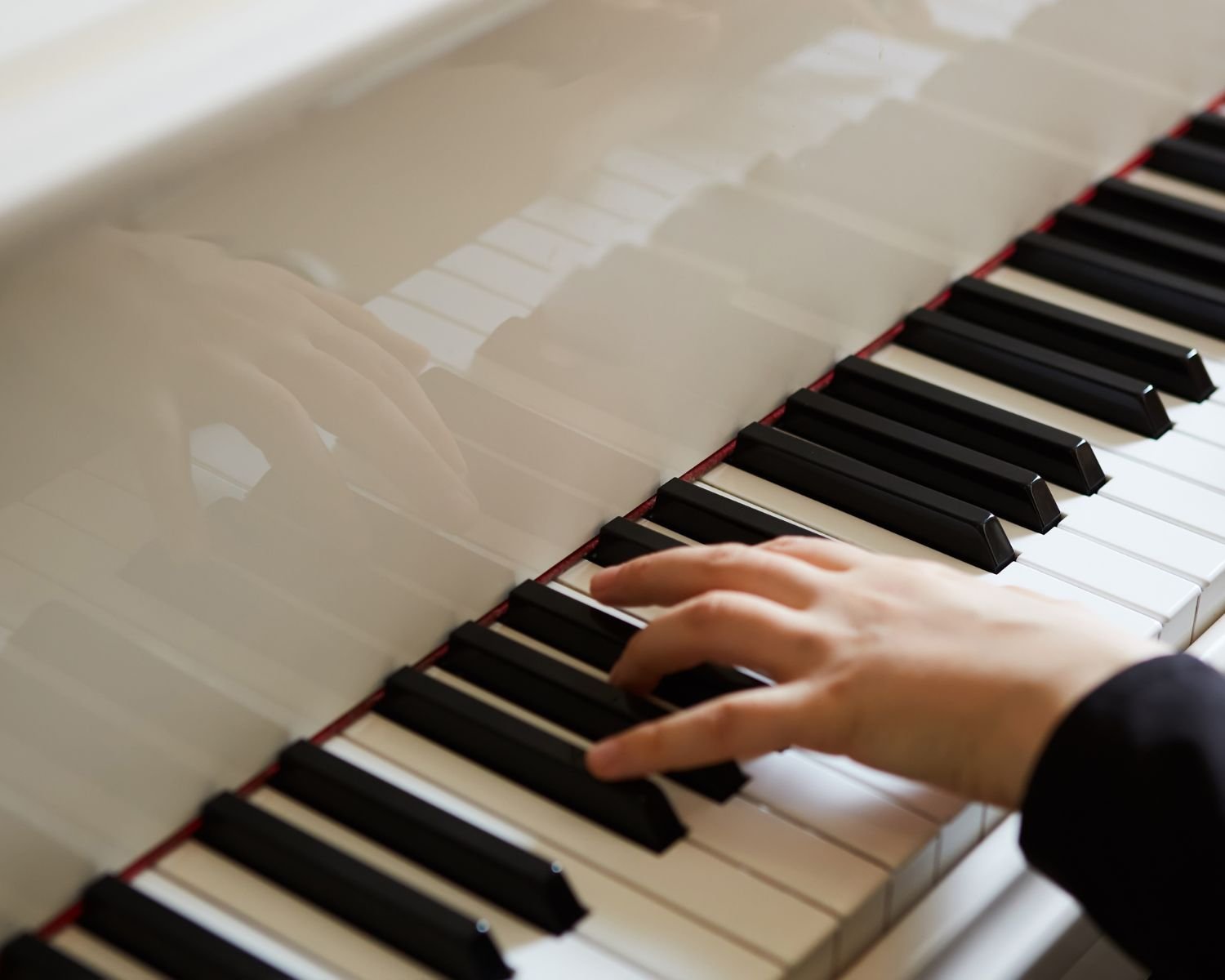Digital piano, traditional piano or keyboard: how to make the right choice? 🎹
Have you ever had to choose between a croissant, a tartelette and a chocolate éclair in a patisserie? Well, choosing between a digital piano, a traditional piano and a keyboard is pretty much the same thing... in a musical version! Each instrument has its own charm, flavor and moment. The sweet melody of a traditional piano, the versatility of a digital piano or the portability of a keyboard? Wondering which would be your best jam session companion?
Each piano has its own history, sound and advantages. So, whether you're a seasoned music lover or just curious, take a break, savor the moment and let us guide you in finding your ideal piano.
What's the difference between a digital piano, a traditional piano and a keyboard?
| Criteria | Digital piano |
|---|---|
| Sound | Electronically produced sound, to imitate various instruments |
| Touch | Imitates the resistance of acoustic piano keys, but may vary from piano to piano. |
| Size and weight | Generally lighter and more compact than a traditional piano |
| Maintenance | Little or no maintenance required |
| Price | Generally less expensive than a traditional piano. From €300 for an entry-level piano at scale and up to €7,000 for a top-of-the-range piano. scale |
| Durability | Less durable over time |
| Power supply required | ✅ |
| Sound options | Wide scale of built-in sounds and effects |
| Connectivity | Often equipped with USB, MIDI ports, etc. |
| Pedal | Often included, sometimes optional |
| Volume | Controllable, can use headphones |
| Learning | Often equipped with learning functions |
| Resonance | Imitation of resonance, may vary from piano to piano |
| Criteria | Traditional piano |
|---|---|
| Sound | Authentic sound produced by strings struck by hammers |
| Touch | Heavy feel, natural key resistance |
| Size and weight | Heavy and bulky, needs space |
| Maintenance | Requires regular tuning and other maintenance |
| Price | "Most expensive piano compared to a digital piano or an electronic keyboard Between €3,000 and €20,000 for an upright piano Between €10,000 and €150,000 for a grand piano" |
| Durability | Highly durable with proper care |
| Power supply required | ❌ |
| Sound options | Unique piano sound |
| Connectivity | Little or no connectivity |
| Pedal | Included as an integral part of the piano |
| Volume | Not controllable without additional devices |
| Learning | Requires traditional teaching methods |
| Resonance | Natural resonance |
| Criteria | Electronic keypad |
|---|---|
| Sound | Versatile electronic sound |
| Touch | Light, may not have dynamic response |
| Size and weight | Very light and portable, various sizes |
| Maintenance | Little or no maintenance required |
| Price | Often less expensive than a piano Between €150 and €1,500 |
| Durability | Depends on keyboard model and brand |
| Power supply required | ✅ |
| Sound options | Wide scale of built-in sounds and effects |
| Connectivity | Often equipped with USB, MIDI ports, etc. |
| Pedal | Sometimes included, often optional |
| Volume | Controllable, can use headphones |
| Learning | Often equipped with learning functions |
| Resonance | Varies from keyboard to keyboard, often no real resonance |
What type of piano is right for you?
The traditional piano
The traditional piano, also known as an acoustic piano, is a mechanical instrument that works by a series of hammers striking strings to create a rich, authentic sound. The two main types of acoustic piano are upright and grand, each with its own shape and size. Acoustic pianos are appreciated for their incomparable sound, dynamic touch and elegant aesthetics, although they require regular maintenance and a lot of space.
✅ Traditional piano is for me if :
I'm a professional musician,
I'm a music student,
I'm a passionate piano player looking for an authentic playing experience,
I have the space at home and the resources to maintain the instrument.
The digital piano
The digital piano is a modern version of the piano, using electronics to reproduce the sound of an acoustic piano. Lighter and less expensive than acoustic pianos, digital pianos offer additional features such as the ability to connect to computers and other devices. Finally, they require little or no maintenance. The only downside is that, although they have made enormous strides in terms of sound quality, some musicians feel they still can't match the richness and depth of an acoustic piano.
✅ The digital piano is for me if :
I'm a beginner pianist,
I'm an occasional musician,
I have limited space at home,
I have a limited budget.
The electronic keyboard
The electronic keyboard is a more affordable option than a digital or traditional piano, with a wide variety of sounds and functions in a compact format. With fewer keys than a standard piano and an often lighter touch, keyboards are ideal for musicians on the move. However, they may not offer the same level of sound quality or playing feel as an acoustic or digital piano.
✅ The electronic keyboard is for me if :
I'm a beginner pianist,
I'm a musician who's often on the move,
I'm looking for a versatile and practical solution for playing the piano,
I want to invest in a musical instrument at an affordable price.
💡 Looking for piano sheet music? Discover 10 must-visit sites for finding piano sheet music.
🎶 Whether you're a beginner pianist, a professional or a teacher, Newzik is the essential tool for revolutionizing your piano playing. Adapted to all types of pianos and keyboards, Newzik lets you manage, annotate and share your digital scores with ease, compatible with all formats (PDF, MusicXML, and many others), from your computer, tablet or smartphone.
Store all your scores in one place, accessible from any device, within easy reach.
Write down your ideas, fingerings and comments directly on your scores.
Share your scores and annotations with your students or music partners, wherever they are, in real time.
Transform your piano lessons with interactive and engaging tools.
Say goodbye to paper sheet music and do your bit for the planet.
👉🏻 Try Newzik free of charge and revolutionize your piano playing!

